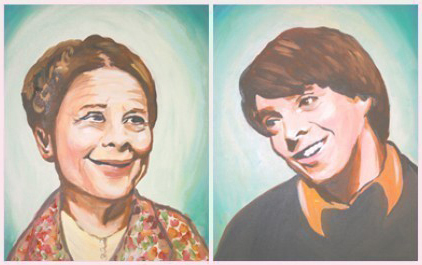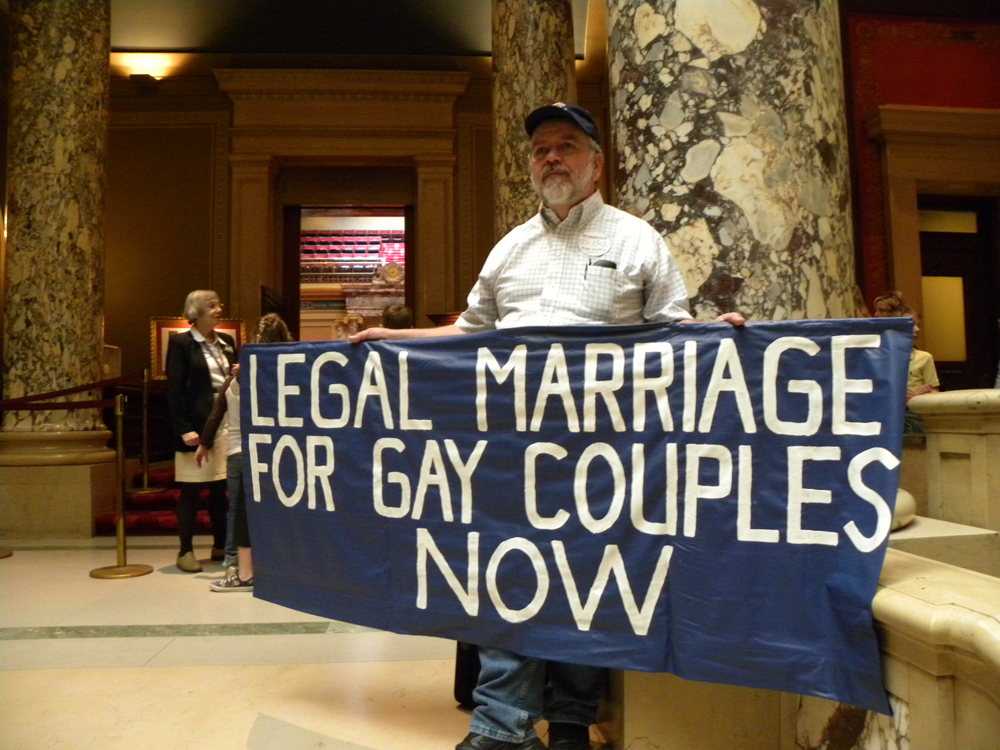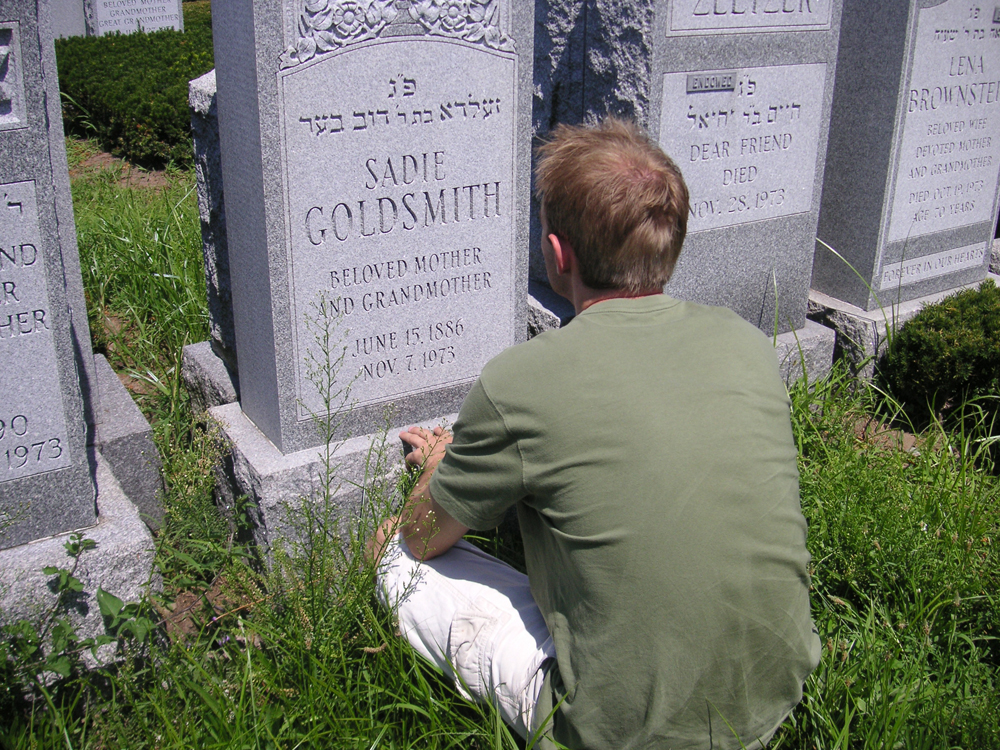The Process of Aging
Overview
- Consider the biological, social, and psychological changes in aging
- Describe the birth of the field of geriatrics
- Examine attitudes toward death and dying and how they affect the elderly
- Name the five stages of grief developed by Dr. Elisabeth Kübler-Ross
As human beings grow older, they go through different phases or stages of life. It is helpful to understand aging in the context of these phases. A life course is the period from birth to death, including a sequence of predictable life events such as physical maturation. Each phase comes with different responsibilities and expectations, which of course vary by individual and culture. Children love to play and learn, looking forward to becoming preteens. As preteens begin to test their independence, they are eager to become teenagers. Teenagers anticipate the promises and challenges of adulthood. Adults become focused on creating families, building careers, and experiencing the world as independent people. Finally, many adults look forward to old age as a wonderful time to enjoy life without as much pressure from work and family life. In old age, grandparenthood can provide many of the joys of parenthood without all the hard work that parenthood entails. And as work responsibilities abate, old age may be a time to explore hobbies and activities that there was no time for earlier in life. But for other people, old age is not a phase that they look forward to. Some people fear old age and do anything to “avoid” it by seeking medical and cosmetic fixes for the natural effects of age. These differing views on the life course are the result of the cultural values and norms into which people are socialized, but in most cultures, age is a master status influencing self-concept, as well as social roles and interactions.
Through the phases of the life course, dependence and independence levels change. At birth, newborns are dependent on caregivers for everything. As babies become toddlers and toddlers become adolescents and then teenagers, they assert their independence more and more. Gradually, children come to be considered adults, responsible for their own lives, although the point at which this occurs is widely varied among individuals, families, and cultures.
As Riley (1978) notes, aging is a lifelong process and entails maturation and change on physical, psychological, and social levels. Age, much like race, class, and gender, is a hierarchy in which some categories are more highly valued than others. For example, while many children look forward to gaining independence, Packer and Chasteen (2006) suggest that even in children, age prejudice leads to a negative view of aging. This, in turn, can lead to a widespread segregation between the old and the young at the institutional, societal, and cultural levels (Hagestad and Uhlenberg 2006).
Dr. Ignatz Nascher and the Birth of Geriatrics
In the early 1900s, a New York physician named Dr. Ignatz Nascher coined the term geriatrics, a medical specialty that focuses on the elderly. He created the word by combining two Greek words: geron (old man) and iatrikos (medical treatment). Nascher based his work on what he observed as a young medical student, when he saw many acutely ill elderly people who were diagnosed simply as “being old.” There was nothing medicine could do, his professors declared, about the syndrome of “old age.”
Nascher refused to accept this dismissive view, seeing it as medical neglect. He believed it was a doctor’s duty to prolong life and relieve suffering whenever possible. In 1914, he published his views in his book Geriatrics: The Diseases of Old Age and Their Treatment (Clarfield 1990). Nascher saw the practice of caring for the elderly as separate from the practice of caring for the young, just as pediatrics (caring for children) is different from caring for grown adults (Clarfield 1990).
Nascher had high hopes for his pioneering work. He wanted to treat the aging, especially those who were poor and had no one to care for them. Many of the elderly poor were sent to live in “almshouses,” or public old-age homes (Cole 1993). Conditions were often terrible in these almshouses, where the aging were often sent and just forgotten.
As hard as it might be to believe today, Nascher’s approach was once considered unique. At the time of his death, in 1944, he was disappointed that the field of geriatrics had not made greater strides. In what ways are the elderly better off today than they were before Nascher’s ideas gained acceptance?
Biological Changes

Each person experiences age-related changes based on many factors. Biological factors such as molecular and cellular changes are called primary aging, while aging that occurs due to controllable factors such as lack of physical exercise and poor diet is called secondary aging (Whitbourne and Whitbourne 2010).
Most people begin to see signs of aging after fifty years old, when they notice the physical markers of age. Skin becomes thinner, drier, and less elastic. Wrinkles form. Hair begins to thin and gray. Men prone to balding start losing hair. The difficulty or relative ease with which people adapt to these changes is dependent in part on the meaning given to aging by their particular culture. A culture that values youthfulness and beauty above all else leads to a negative perception of growing old. Conversely, a culture that reveres the elderly for their life experience and wisdom contributes to a more positive perception of what it means to grow old.
The effects of aging can feel daunting, and sometimes the fear of physical changes (like declining energy, food sensitivity, and loss of hearing and vision) is more challenging to deal with than the changes themselves. The way people perceive physical aging is largely dependent on how they were socialized. If people can accept the changes in their bodies as a natural process of aging, the changes will not seem as frightening.
According to the federal Administration on Aging (2011), in 2009 fewer people over sixty-five years old assessed their health as “excellent” or “very good” (41.6 percent) compared to those aged eighteen to sixty-four (64.4 percent). Evaluating data from the National Center for Health Statistics and the U.S. Bureau of Labor Statistics, the Administration on Aging found that from 2006 to 2008, the most frequently reported health issues for those over sixty-five years old included arthritis (50 percent), hypertension (38 percent), heart disease (32 percent), and cancer (22 percent). About 27 percent of people age sixty and older are considered obese by current medical standards. Parker and Thorslunf (2006) found that while the trend is toward steady improvement in most disability measures, there is a concomitant increase in functional impairments (disability) and chronic diseases. At the same time, medical advances have reduced some of the disabling effects of those diseases (Crimmins 2004).
Some impacts of aging are gender-specific. Some of the disadvantages aging women face arise from long-standing social gender roles. For example, Social Security favors men over women, inasmuch as women do not earn Social Security benefits for the unpaid labor they perform (usually at home) as an extension of their gender roles. In the healthcare field, elderly female patients are more likely than elderly men to see their healthcare concerns trivialized (Sharp 1995) and are more likely to have their health issues labeled psychosomatic (Munch 2004). Another female-specific aspect of aging is that mass-media outlets often depict elderly females in terms of negative stereotypes and as less successful than older men (Bazzini and Mclntosh I997).
For men, the process of aging—and society’s response to and support of the experience—may be quite different. The gradual decrease in male sexual performance that occurs as a result of primary aging is medicalized and constructed as needing treatment (Marshall and Katz 2002) so that a man may maintain a sense of youthful masculinity. On the other hand, aging men have fewer opportunities to assert their masculine identities in the company of other men (for example, through sports participation) (Drummond 1998). And some social scientists have observed that the aging male body is depicted in the Western world as genderless (Spector-Mersel 2006).

Social and Psychological Changes
Male or female, growing older means confronting the psychological issues that come with entering the last phase of life. Young people moving into adulthood take on new roles and responsibilities as their lives expand, but an opposite arc can be observed in old age. What are the hallmarks of social and psychological change?
Retirement—the withdrawal from paid work at a certain age—is a relatively recent idea. Up until the late nineteenth century, people worked about sixty hours a week until they were physically incapable of continuing. Following the American Civil War, veterans receiving pensions were able to withdraw from the workforce, and the number of working older men began declining. A second large decline in the number of working men began in the post-World War II era, probably due to the availability of Social Security, and a third large decline in the 1960s and 1970s was probably due to the social support offered by Medicare and the increase in Social Security benefits (Munnell 2011).
In the twenty-first century, most people hope that at some point they will be able to stop working and enjoy the fruits of their labor. But do we look forward to this time or fear it? When people retire from familiar work routines, some easily seek new hobbies, interests, and forms of recreation. Many find new groups and explore new activities, but others may find it more difficult to adapt to new routines and loss of social roles, losing their sense of self-worth in the process.
Each phase of life has challenges that come with the potential for fear. Erik H. Erikson (1902–1994), in his view of socialization, broke the typical life span into eight phases. Each phase presents a particular challenge that must be overcome. In the final stage, old age, the challenge is to embrace integrity over despair. Some people are unable to successfully overcome the challenge. They may have to confront regrets, such as being disappointed in their children’s lives or perhaps their own. They may have to accept that they will never reach certain career goals. Or they must come to terms with what their career success has cost them, such as time with their family or declining personal health. Others, however, are able to achieve a strong sense of integrity and are able to embrace the new phase in life. When that happens, there is tremendous potential for creativity. They can learn new skills, practice new activities, and peacefully prepare for the end of life.
For some, overcoming despair might entail remarriage after the death of a spouse. A study conducted by Kate Davidson (2002) reviewed demographic data that asserted men were more likely to remarry after the death of a spouse and suggested that widows (the surviving female spouse of a deceased male partner) and widowers (the surviving male spouse of a deceased female partner) experience their postmarital lives differently. Many surviving women enjoyed a new sense of freedom, since they were living alone for the first time. On the other hand, for surviving men, there was a greater sense of having lost something, because they were now deprived of a constant source of care as well as the focus of their emotional life.
Aging and Sexuality

It is no secret that people in the United States are squeamish about the subject of sex. And when the subject is the sexuality of elderly people? No one wants to think about it or even talk about it. That fact is part of what makes 1971’s Harold and Maude so provocative. In this cult favorite film, Harold, an alienated young man, meets and falls in love with Maude, a seventy-nine-year-old woman. What is so telling about the film is the reaction of his family, priest, and psychologist, who exhibit disgust and horror at such a match.
Although it is difficult to have an open, public national dialogue about aging and sexuality, the reality is that our sexual selves do not disappear after age sixty-five. People continue to enjoy sex—and not always safe sex—well into their later years. In fact, some research suggests that as many as one in five new cases of AIDS occurs in adults over sixty-five years old (Hillman 2011).
In some ways, old age may be a time to enjoy sex more, not less. For women, the elder years can bring a sense of relief as the fear of an unwanted pregnancy is removed and the children are grown and taking care of themselves. However, while we have expanded the number of psycho-pharmaceuticals to address sexual dysfunction in men, it was not until very recently that the medical field acknowledged the existence of female sexual dysfunctions (Bryant 2004).
Aging “Out:” LGBT Seniors

How do different groups in our society experience the aging process? Are there any experiences that are universal, or do different populations have different experiences? An emerging field of study looks at how lesbian, gay, bisexual, and transgender (LGBT) people experience the aging process and how their experience differs from that of other groups or the dominant group. This issue is expanding with the aging of the baby boom generation; not only will aging boomers represent a huge bump in the general elderly population but also the number of LGBT seniors is expected to double by 2030 (Fredriksen-Goldsen et al. 2011).
A recent study titled The Aging and Health Report: Disparities and Resilience among Lesbian, Gay, Bisexual, and Transgender Older Adults finds that LGBT older adults have higher rates of disability and depression than their heterosexual peers. They are also less likely to have a support system that might provide elder care: a partner and supportive children (Fredriksen-Goldsen et al. 2011). Even for those LGBT seniors who are partnered, some states do not recognize a legal relationship between two people of the same sex, which reduces their legal protection and financial options.
As they transition to assisted-living facilities, LGBT people have the added burden of “disclosure management:” the way they share their sexual and relationship identity. In one case study, a seventy-eight-year-old lesbian lived alone in a long-term care facility. She had been in a long-term relationship of thirty-two years and had been visibly active in the gay community earlier in her life. However, in the long-term care setting, she was much quieter about her sexual orientation. She “selectively disclosed” her sexual identity, feeling safer with anonymity and silence (Jenkins et al. 2010). A study from the National Senior Citizens Law Center reports that only 22 percent of LGBT older adults expect they could be open about their sexual orientation or gender identity in a long-term care facility. Even more telling is the finding that only 16 percent of non-LGBT older adults expected that LGBT people could be open with facility staff (National Senior Citizens Law Center 2011).
Same-sex marriage—a civil rights battleground that is being fought in many states—can have major implications for the way the LGBT community ages. With marriage comes the legal and financial protection afforded to opposite-sex couples, as well as less fear of exposure and a reduction in the need to “retreat to the closet” (Jenkins et al. 2010). Changes in this area are coming slowly, and in the meantime, advocates have many policy recommendations for how to improve the aging process for LGBT individuals. These recommendations include increasing federal research on LGBT elders, increasing (and enforcing existing) laws against discrimination, and amending the federal Family and Medical Leave Act to cover LGBT caregivers (Grant 2009).
Death and Dying

For most of human history, the standard of living was significantly lower than it is now. Humans struggled to survive with few amenities and very limited medical technology. The risk of death due to disease or accident was high in any life stage, and life expectancy was low. As people began to live longer, death became associated with old age.
For many teenagers and young adults, losing a grandparent or another older relative can be the first loss of a loved one they experience. It may be their first encounter with grief, a psychological, emotional, and social response to the feelings of loss that accompanies death or a similar event.
People tend to perceive death, their own and that of others, based on the values of their culture. While some may look upon death as the natural conclusion to a long, fruitful life, others may find the prospect of dying frightening to contemplate. People tend to have strong resistance to the idea of their own death, and strong emotional reactions of loss to the death of loved ones. Viewing death as a loss, as opposed to a natural or tranquil transition, is often considered normal in the United States.
What may be surprising is how few studies were conducted on death and dying prior to the 1960s. Death and dying were fields that had received little attention until a psychologist named Elisabeth Kübler-Ross began observing people who were in the process of dying. As Kübler-Ross witnessed people’s transition toward death, she found some common threads in their experiences. She observed that the process had five distinct stages: denial, anger, bargaining, depression, and acceptance. She published her findings in a 1969 book called On Death and Dying. The book remains a classic on the topic today.
Kübler-Ross found that a person’s first reaction to the prospect of dying is denial: this is characterized by the person's not wanting to believe he or she is dying, with common thoughts such as “I feel fine” or “This is not really happening to me.” The second stage is anger, when loss of life is seen as unfair and unjust. A person then resorts to the third stage, bargaining: trying to negotiate with a higher power to postpone the inevitable by reforming or changing the way he or she lives. The fourth stage, psychological depression, allows for resignation as the situation begins to seem hopeless. In the final stage, a person adjusts to the idea of death and reaches acceptance. At this point, the person can face death honestly, by regarding it as a natural and inevitable part of life and can make the most of their remaining time.
The work of Kübler-Ross was eye-opening when it was introduced. It broke new ground and opened the doors for sociologists, social workers, health practitioners, and therapists to study death and help those who were facing death. Kübler-Ross’s work is generally considered a major contribution to thanatology: the systematic study of death and dying.
Of special interests to thanatologists is the concept of “dying with dignity.” Modern medicine includes advanced medical technology that may prolong life without a parallel improvement to the quality of life one may have. In some cases, people may not want to continue living when they are in constant pain and no longer enjoying life. Should patients have the right to choose to die with dignity? Dr. Jack Kevorkian was a staunch advocate for physician-assisted suicide: the voluntary or physician-assisted use of lethal medication provided by a medical doctor to end one’s life. This right to have a doctor help a patient die with dignity is controversial. In the United States, Oregon was the first state to pass a law allowing physician-assisted suicides. In 1997, Oregon instituted the Death with Dignity Act, which required the presence of two physicians for a legal assisted suicide. This law was successfully challenged by U.S. Attorney General John Ashcroft in 2001, but the appeals process ultimately upheld the Oregon law. Subsequently, both Montana and Washington have passed similar laws.
The controversy surrounding death with dignity laws is emblematic of the way our society tries to separate itself from death. Health institutions have built facilities to comfortably house those who are terminally ill. This is seen as a compassionate act, helping relieve the surviving family members of the burden of caring for the dying relative. But studies almost universally show that people prefer to die in their own homes (Lloyd, White, and Sutton 2011). Is it our social responsibility to care for elderly relatives up until their death? How do we balance the responsibility for caring for an elderly relative with our other responsibilities and obligations? As our society grows older, and as new medical technology can prolong life even further, the answers to these questions will develop and change.
The changing concept of hospice is an indicator of our society’s changing view of death. Hospice is a type of healthcare that treats terminally ill people when “cure-oriented treatments” are no longer an option (Hospice Foundation of America 2012b). Hospice doctors, nurses, and therapists receive special training in the care of the dying. The focus is not on getting better or curing the illness, but on passing out of this life in comfort and peace. Hospice centers exist as a place where people can go to die in comfort, and increasingly, hospice services encourage at-home care so that someone has the comfort of dying in a familiar environment, surrounded by family (Hospice Foundation of America 2012a). While many of us would probably prefer to avoid thinking of the end of our lives, it may be possible to take comfort in the idea that when we do approach death in a hospice setting, it is in a familiar, relatively controlled place.
Summary
Old age affects every aspect of human life: biological, social, and psychological. Although medical technology has lengthened life expectancies, it cannot eradicate aging and death. Cultural attitudes shape the way our society views old age and dying, but these attitudes shift and evolve over time.
Section Quiz
Thanatology is the study of _____.
- life expectancy
- biological aging
- death and dying
- adulthood
Hint:
C
In Erik Erikson’s developmental stages of life, with which challenge must older people struggle?
- Overcoming despair to achieve integrity
- Overcoming role confusion to achieve identity
- Overcoming isolation to achieve intimacy
- Overcoming shame to achieve autonomy
Hint:
A
Who wrote the book On Death and Dying, outlining the five stages of grief?
- Ignatz Nascher
- Erik Erikson
- Elisabeth Kübler-Ross
- Carol Gilligan
Hint:
C
For individual people of a certain culture, the life course is ________.
- the average age they will die
- the lessons they must learn
- the length of a typical bereavement period
- the typical sequence of events in their lives
Hint:
D
In the United States, life expectancy rates in recent decades have ______.
- continued to gradually rise
- gone up and down due to global issues such as military conflicts
- lowered as healthcare improves
- stayed the same since the mid-1960s
Hint:
A
Short Answer
Test Elisabeth Kübler-Ross’s five stages of grief. Think of someone or something you have lost. You might consider the loss of a relationship, possession, or aspect of your self-identity. For example, perhaps you dissolved a childhood friendship, sold your car, or got a bad haircut. For even a small loss, did you experience all five stages of grief? If so, how did the expression of each stage manifest? Did the process happen slowly or rapidly? Did the stages occur out of order? Did you reach acceptance? Try to recall the experience and analyze your own response to loss. Does your experience facilitate your empathizing with the elderly?
What do you think it will be like to be ten, twenty, and fifty years older than you are now? What facts are your assumptions based on? Are any of your assumptions about getting older false? What kind of sociological study could you establish to test your assumptions?
What is your relationship to aging and to time? Look back on your own life. How much and in what ways did you change in ten years and in twenty years? Does a decade seem like a long time or a short time in a life span? Now apply some of your ideas to the idea of aging. Do you think older people share similar experiences as they age?
Further Research
Read the article “A Study of Sexuality and Health among Older Adults in the United States.” You will find it online at the New England Journal of Medicine: http://openstaxcollege.org/l/New_England_journal_medicine
References
Administration on Aging. 2011. “A Profile of Older Americans 2010.” Retrieved January 29, 2012 (http://www.aoa.gov/AoARoot/Aging_Statistics/Profile/2010/14.aspx).
Bazzini, D.G., and W.D. Mclntosh. 1997. "The Aging Women in Popular Film: Underrepresented, Unattractive, Unfriendly, and Unintelligent." Sex Roles 36:531–43.
Bryant, Ed. 2004. “Male and Female Sexual Dysfunction.” Voice of the Diabetic 19(1). Retrieved January 29, 2012 (http://www.nfb.org/nfb/diabetic_sexual_dysfunction.asp?SnID=963479200).
Clarfield, A. Mark. 1990. “Dr. Ignatz Nascher and the Birth of Geriatrics.” Canadian Medical Association Journal 143(9):944–945, 948.
Cole, Thomas R. 1993. The Journey of Life: a Cultural History of Aging in America. Cambridge: Cambridge University Press.
Crimmins, Eileen. 2004. “Trends in the Health of the Elderly.” Annual Review of Public Health 25:79–98.
Davidson, Kate. 2002. “Gender Differences in New Partnership Choices and Constraints for Older Widows and Widowers.” Ageing International 27: 43–60.
Drummond, Murray. 1998. “Sports, Aging Men, and Constructions of Masculinity.” Generations 32:32–35.
Erikson, Erik H. 1963 [1950]. Childhood and Society. New York: Norton.
Fredriksen-Goldsen, K.I., H.J. Kim, C.A. Emlet, A. Muraco, E.A. Erosheva, C.P. Hoy-Ellis, J. Goldsen, and H. Petry. 2011. The Aging and Health Report: Disparities and Resilience among Lesbian, Gay, Bisexual, and Transgender Older Adults. Seattle, WA: Institute for Multigenerational Health. Retrieved January 29, 2012 (http://caringandaging.org/wordpress/wp-content/uploads/2011/05/Full-Report-FINAL.pdf).
Grant, Jaime M. 2009. “Outing Age 2010: Public Policy Issues Affecting Lesbian, Gay, Bisexual and Transgender (LGBT) Elders.” National Gay and Lesbian Task Force Policy Institute. Washington, DC. Retrieved January 29, 2012 (http://www.thetaskforce.org/downloads/reports/reports/outingage_final.pdf).
Hagestad, Gunhild, and Peter Uhlenberg. 2006. “Should We Be Concerned about Age Segregation?” Research on Aging 28:638–653.
Harold and Maude. N.d. Retrieved February 1, 2012 (http://www.imdb.com/title/tt0067185/).
Hillman, Jennifer. 2011. “A Call for an Integrated Biopsychosocial Model to Address Fundamental Disconnects in an Emergent Field: An Introduction to the Special Issue on 'Sexuality and Aging'.” Aging International 36:303–312.
Hospice Foundation of America. 2012a. “Welcome.” Retrieved February 13, 2012 (http://register.hospicefoundation.org/welcome).
Hospice Foundation of America. 2012b. “What Is Hospice?” Retrieved January 29, 2012 (http://www.hospicefoundation.org/whatishospice).
Jenkins D., C. Walker, H. Cohen, and L. Curry. 2010. “A Lesbian Older Adult Managing Identity Disclosure: A Case Study.” Journal of Gerontological Social Work 53:402–420.
Lindau, Stacy Tessler, M.D., L. Philip Schumm, Edward O. Laumann, Wendy Levinson, Colm A. O'Muircheartaigh, and Linda J. Waite. 2007. “A Study of Sexuality and Health among Older Adults in the United States.” New England Journal of Medicine 357:762–774.
Lloyd, Liz, Kate White, and Eileen Sutton. 2011. “Researching the End-of-Life in Old Age: Cultural, Ethical and Methodological Issues.” Aging &Society 31:386–407.
Marshall, B., and S. Katz. 2002. “Forever Functional: Sexual Fitness and the Aging Male Body.” Body and Society 8:43–70.
MetLife Mature Market Institute. 2010. “Still Out, Still Aging: The Met Life Study of Lesbian, Gay, Bisexual, and Transgender Baby Boomers.” Retrieved January 29, 2012 (http://www.metlife.com/assets/cao/mmi/publications/studies/2010/mmi-still-out-still-aging.pdf).
Munch, S. 2004. "Gender-Biased Diagnosing of Women's Medical Complaints: Contributions of Feminist Thought, 1970-1995." Women & Health 40:101–121.
Munnell, Alice. 2011. “What Is the Average Retirement Age?” Center for Retirement Research. Retrieved January 29, 2012 (http://crr.bc.edu/briefs/what_is_the_average_retirement_age.html).
National Senior Citizens Law Center. 2011. “LGTB Older Adults in Long-Term Care Facilities: Stories from the Field.” Retrieved January 30, 2012 (http://www.lgbtlongtermcare.org/).
Packer, Dominic and Alison Chasteen. 2006. “Looking Towards the Future: How Possible Aged Selves Influence Prejudice Towards Older Adults.” Social Cognition 24:218–247.
Parker, Marti and Thorslund Mats. 2007. “Health Trends in the Elderly Population: Getting Better and Getting Worse.” The Gerontologist 47:150–158.
Pleis, J.R., J.W. Lucas, and B.W. Wared. 2009. “Summary Health Statistics for U.S. Adults: National Health Interview Survey, 2008.” Data from the National Health Survey, Series 10. No. 242.
Riley, Matilda White. 1978. "Aging, Social Change, and the Power of Ideas." Daedalus 107:39–52.
Sharpe, P.A. 1995. "Older Women and Health Services: Moving from Ageism Toward Empowerment." Women & Health 22:9–23.
Spector-Mersel, Gabriela. 2006. “Never-Aging Stories: Western Hegemonic Masculinity Scripts.” Journal of Gender Studies 15:67–82.
Whitbourne, Susan and Stacey Whitbourne. 2010. Adult Development and Aging: Biopsychosocial Perspectives. 4th ed. Hoboken, NJ: Wiley.